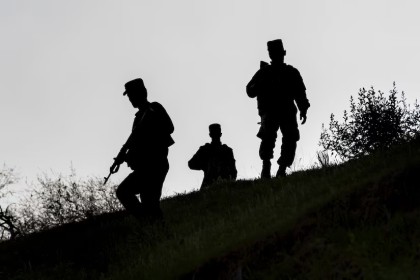SpaceX’s Falcon Heavy rocket took off from Cape Canaveral, Florida, this afternoon and soared to space, carrying its payload — CEO Elon Musk’s red Tesla Roadster — into an orbit that stretches into the asteroid belt. The Falcon Heavy’s first flight is finally over, and despite a fudged landing in the ocean, the rocket has shown its prowess and is likely ready to begin missions for customers.
Adding to the launch’s success, two of the Falcon Heavy’s rocket cores successfully touched down back on Earth after takeoff. The two outer boosters broke away mid-flight and returned to the Cape, touching down around 1,000 feet from one another on SpaceX’s concrete landing pads — Landing Zone 1 and Landing Zone 2. The center core then broke away from the vehicle’s upper stage, but did not land as intended on one of SpaceX’s autonomous drone ships in the Atlantic Ocean. That means SpaceX has now landed a total of 23 rockets upright.
The Falcon Heavy now holds the title for the world’s most powerful rocket, and its launch marks the first time a vehicle this massive has ever been sent up by a commercial company. It boasts 27 engines, more than any other working rocket has ever used, which together create a combined 5 million pounds of thrust at liftoff. That means the Falcon Heavy can put around 140,000 pounds of cargo into lower Earth orbit, more than twice as much weight as any other operational rocket. This powerful vehicle could open up entirely new types of business for SpaceX: launching heavy national security satellites or even sending large modules or people into deep space.
Today’s launch was a solid performance of what has been one of the most anticipated rockets to launch in the last decade. SpaceX first announced plans to develop the Falcon Heavy back in 2011, with the goal of launching it as early as 2013 or 2014. However, the inaugural mission has suffered numerous delays; two failures of SpaceX’s Falcon 9 pushed the launch even further out than planned. Musk also noted that engineering the rocket turned out to be unexpectedly difficult. “It actually ended up being way harder to do Falcon Heavy than we thought,” he said at a press conference in July. “At first it sounds easy: just stick two first stages on as strap-on boosters. How hard can it be? But then all the loads change, the aerodynamics change.”















